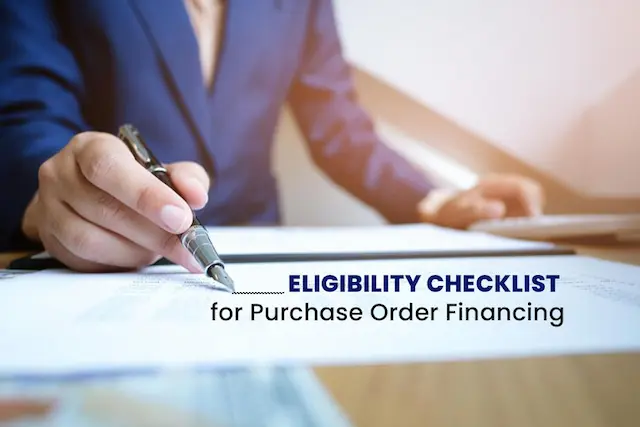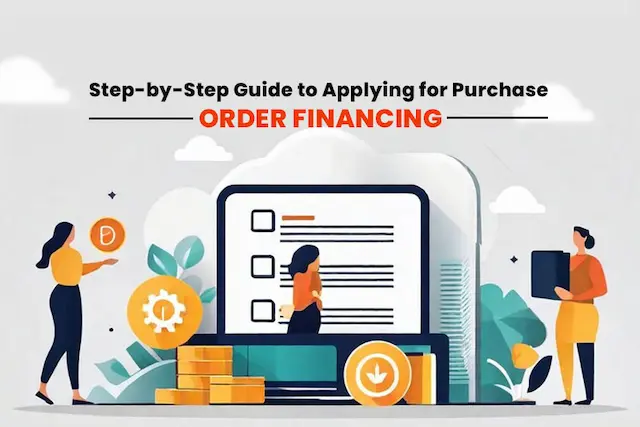As a startup, you just locked in your dream order, and it’s nothing less than a dream come true. Shortly after, here comes the reality check: your inventory. insufficient goods and raw materials to fulfill your order. You get another shocker as you don’t even have sufficient funds to buy goods from your supplier.
But every problem has a solution, and here it’s purchase order financing. You have this amazing financial solution available to fulfill your order successfully and gain a loyal and lifelong customer. It’s a viable option to get quick funds and continue with your business operations without any hindrance.
Key Takeaways
Purchase order financing is a financial agreement where a business can raise funds to buy goods from the supplier against purchase orders issued by its customers.
Purchase order financing offers valuable support to startups while awaiting cash flow.
There are four parties involved in a purchase order financing agreement- Seller, Lender, Supplier, Customer.
What Is Purchase Order Financing?
Purchase order financing, also known as PO financing, is a financial agreement where a business can raise funds to buy goods from the supplier against purchase orders issued by its customers. The financial solution allows businesses to pay for the goods required to fulfill the customer’s order even before invoicing buyers.
Also Read: A Complete Guide on Purchase Order Financing: What it is & How it works?
Who All Are Involved in a Purchase Order Financing Agreement?
Typically, there are four parties involved in a purchase order financing agreement directly or indirectly.
Seller/Borrower- The business that’s in need of funds to fulfill the order.
Lender- It’s a company that finances the purchase order transaction. They examine the purchase order and the borrower’s eligibility before transferring money to the supplier immediately to complete the current order.
Supplier- Supplier is the party that provides goods and services to the seller to fulfill the order.
Customer- Customers are the main party who made the initial order based on what the entire process follows and augments. They get the final goods from the seller/borrower.
Completing Purchase Order Financing: Step-by-Step Guide for Startups
Navigate PO financing with this guide for startup success.
1. The Customer Places An Order
The PO financing process begins with the customer placing a purchase order with the seller with the intention of making the final purchase. The purchase order has details like the product, the number of products, and the final date to fulfill and receive the order.
Example: An office manager decides to change the office furniture and orders for 100 new chairs. They start with drafting a PO and sending it to the company they want to place the order with. The purchase order has to list the specific chair they want, how many chairs they want (in this case, 100), where they want the chairs delivered, and when they want to get the chairs.
2. Quote Request From The Supplier
After the customer places the final order with a purchase order, the seller now requests a quotation from the supplier. The seller needs to share details about the order with the supplier, who then assesses their inventory and calculates the cost of fulfilling the order.
After accessing funds needed to complete the order as shared by the supplier, the seller evaluates whether they have enough funds or not to make the payment to the supplier to buy goods needed. If not, they need to look for options to meet the payment requirements.
Example: For instance, in the example of the office chairs company previously described, they discovered their present funds weren’t sufficient for the purchase when they approached their supplier to inquire about the 100-chair order. As a result, they decided to use purchase order financing to keep their promise to the client.
3. Vendor Asks A Lender For Credit Under A Purchase Order
The seller must submit an application to a finance provider for the required amounts after they have decided to pursue purchase order financing. To be eligible for funding, the supplier’s quote and the customer’s initial purchase order must be submitted.
4. The Supplier Gets Fund To Fulfill the Order
After the final approval, the supplier gets the funds to buy raw materials and fulfill the order. The money the supplier receives should cover the costs of making and delivering the items mentioned in the purchase order.
5. The Final Order
Once the supplier gets the fund, they get in the action to fulfill the final order directly to their customers. In this process, the seller has no role to play.
6. The seller Sends an Invoice to the Customer
After the order is fulfilled, the seller requests payment via an invoice. The money the supplier receives should cover the costs of making and delivering the items mentioned in the purchase order.
7. The Customer Settles The Invoice
Once the customer settles the invoice, the payment they make is directly transferred to the financing lender, thus completing the financial transaction smoothly and efficiently.
8. The Lender Deducts Fees and Pays the Seller the Rest
Once the financing company receives the payment settled by the customer, it deducts its fees and handover the remaining amount to the seller.
The Credlix Advantage
We understand how important it is to quickly get raw materials to fulfill your order. Credlix for exporters offers competitive rates for purchase order financing, guaranteeing that you get quick and hassle-free loans for accepted purchase orders. Your company can easily complete confirmed purchase orders thanks to our PO Financing service, which gives you access to the necessary working capital.
Final Words
To sum up the startup’s guide to purchase order financing, it’s a great financing solution for startups facing cash and inventory issues. It helps sellers accept big orders, fulfill them, and grow. With Credlix, you can get competitive rates for seamless purchase order financing, making it convenient to meet your customers’ demands and expand your business.




